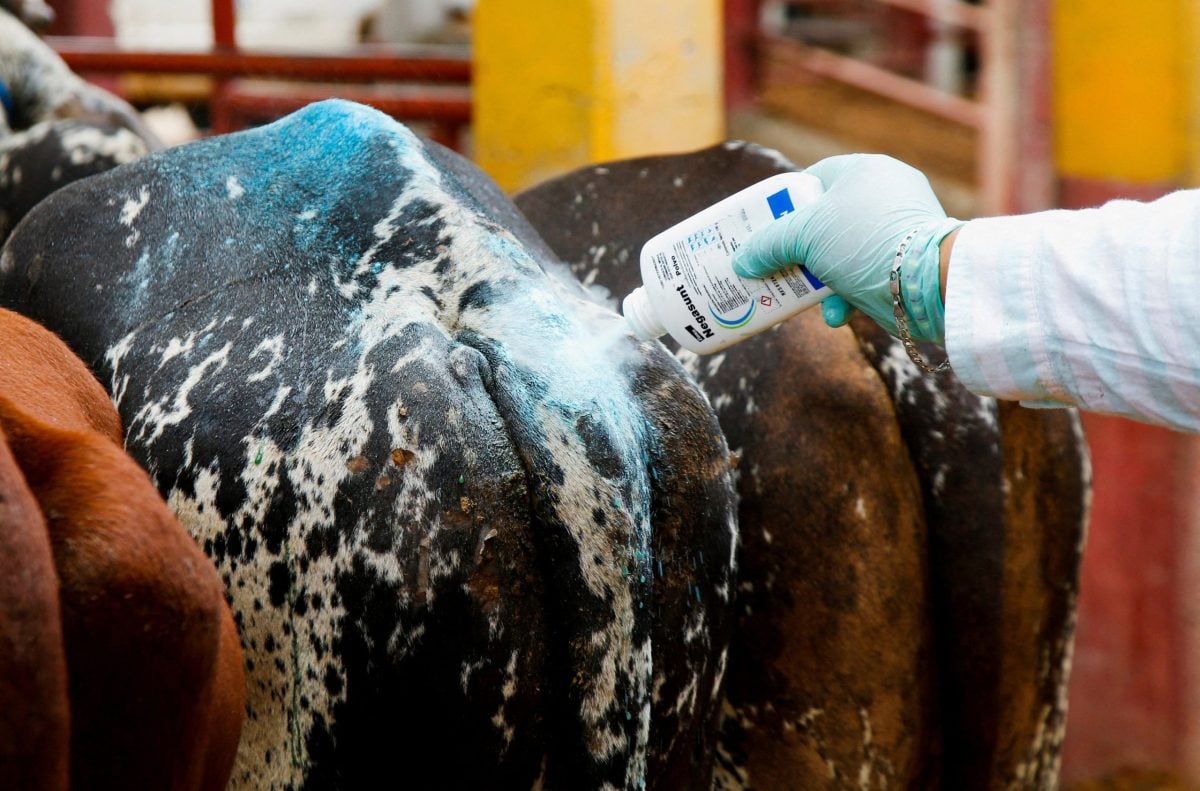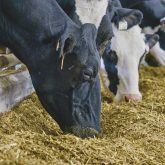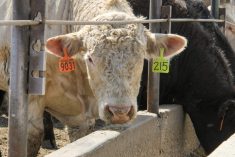Updated, Jan. 24 — A panel tasked with reviewing complaints of changes in Canadian butter’s consistency has found there’s not enough data out there to support those complaints — nor to support the allegation that palm byproducts in cows’ rations were the cause.
The Expert Working Group on Feed Supplementation, set up by Dairy Farmers of Canada (DFC) and other industry players in February last year to review those claims, said as much Friday as it published its 84-page report reviewing the matter.
Thus, a “key recommendation” of the report is “the need for better and more consistent time series data both when it comes to the evolution of the fatty acid profile of milk and butter, and butter hardness off retail shelves,” the working group wrote.
Read Also

Mexico agriculture secretary says still no date for restarting cattle exports to U.S.
Mexican Agriculture Minister Julio Berdegue said on Wednesday that Mexico and the United States have not yet set a date to resume Mexican cattle exports amid an outbreak of the flesh-eating screwworm parasite.
The 13-member working group, which included reps from the Consumers’ Association of Canada, processors and farmer groups, “cannot conclude that any perceived increase in the hardness of butter be solely attributed to the use of palm-derived feed supplements,” group chair Daniel Lefebvre said Friday in a release.
“There is a variety of factors that influence the fatty acid profile of milk which is only one of the factors that can affect butter consistency. We have also concluded there are gaps in the body of knowledge that should be addressed, and we offered a series of recommendations to better understand issues related to the properties of butter while also ensuring that industry is better equipped to meet consumer expectations.”
DFC, for its part, said in a release Friday it “supports the conclusion of the report” and will fund further research to “address the remaining questions” the report lays out.
All that said, DFC’s recommendation to dairy farmers last February — that they “consider alternatives to palm supplements” in their cattle rations, pending the review’s outcome — still stands.
“In light of remaining unanswered questions, DFC’s recommendation that dairy farmers consider alternatives to palm byproducts supplements in feed rations remains,” a DFC spokesperson said via email late Friday.
Similarly, a request last February from les Producteurs de lait du Quebec (PLQ) — asking that Quebec producers stop using such products in their rations, and that food processors adjust their recipes accordingly — still stands, a PLQ spokesperson said separately Saturday.
The working group’s assignment came in the wake of what DFC last February described as “recent anecdotal reports regarding the hardness of butter.”
Specifically, complaints were appearing on social media from Canadian consumers alleging their recently-purchased butter wasn’t softening to a spreadable consistency at room temperature.
At that time, the working group said in its report, “consumer organizations in Canada received contacts from individuals expressing concerns about this issue; particularly as it related to the use of butter in baking. However, given other issues that were occurring at the time due to the pandemic, these contacts were not widespread.”
Butter samples
The working group, chaired by Lefebvre, the chief operations officer for Lactanet, said Friday it met seven times from March to December 2021 and “sought presentations and reports from several outside experts.”
On top of its literature review, the group also commissioned two “data collection efforts.” One was to assess, compile and analyze data on “the fatty acid composition of raw milk from across Canada.” The other involved collecting 40 samples of retail butter from across Canada and analyzing those samples’ fatty acid profile and “physical properties.”
The working group, in its report, noted there are about 400 different fatty acids in milk, so “when people first heard the term ‘palmitic acid,’ most people had limited background available to understand what it means in the broader scientific context.”
Palmitic acid, the group said, is “the predominant fatty acid in milk, regardless of what cows eat” and “is also the most common saturated fatty acid in nature. Cows produce palmitic acid naturally, along with hundreds of other fatty acids in their milk.”
While livestock feed ingredients also contain such fatty acids, the group said, “feeding cows palm-derived feed supplements is not the main factor contributing to palmitic acid in milk.”
Rather, the group said, most of the palmitic acid in milk comes from the cow’s consumption of “traditional” feed ingredients such as hay, silage, grass and cereal grains and the cow synthesizing it naturally in the udder.
Fatty acid composition of milk, the group said, is also influenced by “a variety of other factors” including — but not limited to — the season, stage of lactation and diet, which in turn is “influenced by geographic region.”
The group’s literature review showed cream handling, temperature of storage and churning are “key factors that may affect the rheological properties of final products” — that is, the melting points of butter or its firmness and perceived “spreadability.”
The group’s consultations with processors found “while there has been a significant shift in demand from the restaurant and hospitality industry to the retail sector” due to the COVID-19 pandemic, there nevertheless has been “no significant change in manufacturing processes and practices over the past year and a half.”
It’s true that palmitic acid concentration in butter is “positively correlated” with the percentage of solid fat in butter and its firmness at room temperature, the working group said, but its survey of retail butter samples found “many other” milk fatty acids are also tied, for better or worse, to the solid fat content and firmness in butter.
Further, the group said, “while the content of palmitic acid in retail butter varies across the country, this variation could not be attributed to one single factor such as feeding cows supplements that contain palmitic acid.”
The group also emphasized any feed-related increases in palmitic acid content in butter would be “modest and extremely unlikely to have human health implications.”
‘Knowledge gaps’
Ultimately, in its report’s summary, the group “observed there is no data to confirm that there has been a change in the consistency of butter over time.”
That same lack of data means it’s “not possible to test for a causal relationship, and therefore draw conclusions” on any link between use of palm byproduct supplements on Canadian dairy farms and the consistency of butter in recent years, the group said.
The working group’s report “sheds light into the knowledge gaps related to the consistency of butter and animal feed supplements containing palm byproducts,” DFC president Pierre Lampron said Friday in that group’s release.
Lefebvre, Lampron said, has been asked to “continue to work with the industry experts in an advisory capacity to help support the design of such future research.”
The Animal Nutrition Association of Canada, which represents feed processors, and the Dairy Processors Association of Canada said Friday they will both keep working with DFC and the industry to continue research into the matter. — Glacier FarmMedia Network













